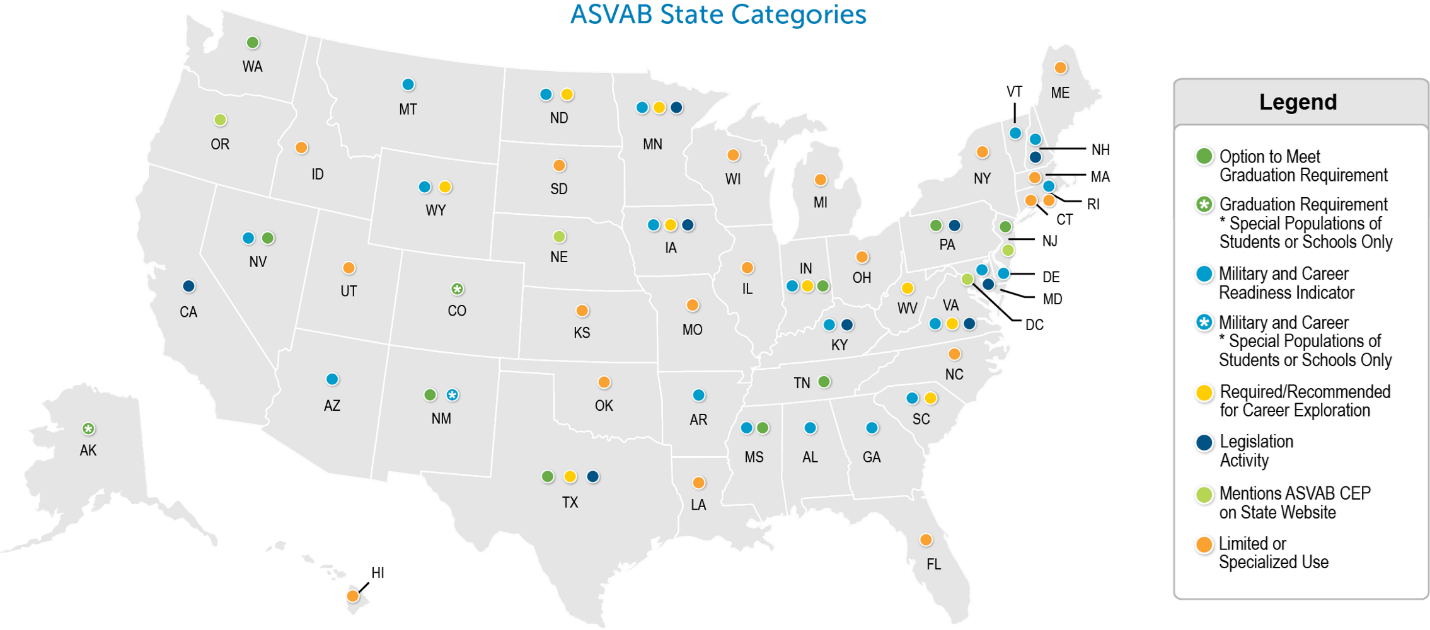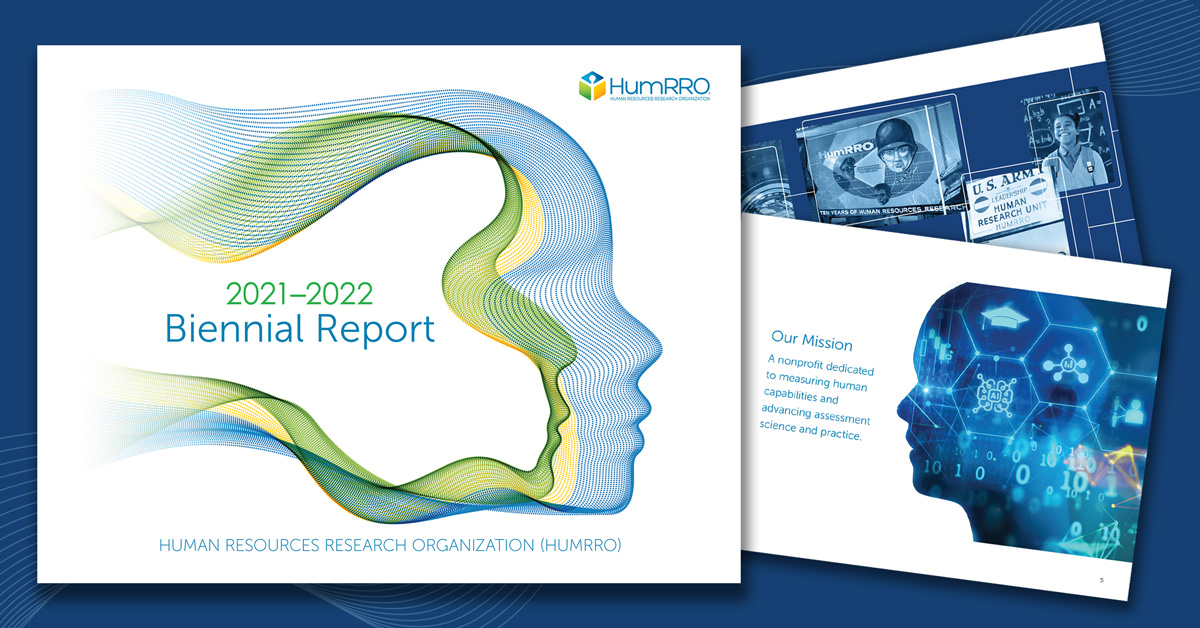The federal Every Student Succeeds Act (ESSA) enacted in 2015 stipulates that “all children receive a well-rounded education” and emphasizes that schools should work to “close student achievement gaps.” To meet this requirement, states often choose to implement college and career readiness (CCR) programs for their students.
In addition to the ESSA, the 2018 reauthorization of the Carl D. Perkins Career and Technical Education Act of 2006 (Perkins IV)—which sought to align ESSA, Perkins, and the Workforce Innovation and Opportunity Act (WIOA), and to strengthen alignment of career and technical education (CTE) programs with labor market needs—spurred adoption of CCR programs throughout the country.
While the definition of “career and college readiness” may vary, states usually approach readiness in one of two ways: as a combination of career and college readiness, or as a focus on either career or college readiness.
The Armed Services Vocational Aptitude Battery Career Exploration Program (ASVAB CEP) covers both college and career components and—what’s more—within the career path, it links to work-based learning (such as apprenticeships, certifications, and licenses), the military, and federal government job opportunities.
Through assessments of knowledge, skills, and abilities (KSAs), vocational interests, and work values, the ASVAB CEP helps students identify occupations that suit them well and offers them resources to create post-secondary readiness plans. Thus, ASVAB CEP can help states meet federal reporting requirements stipulated by the ESSA and Perkins legislation.
ASVAB CEP Offers Comprehensive CCR
HumRRO has provided psychometric assessment and analysis, research and development, and software development and website hosting for the ASVAB CEP. Rod McCloy, Ph.D., Principal Scientist at HumRRO, recommends states use the ability and interest assessments from the ASVAB CEP to enhance ESSA-required educational outcomes.
“The career exploration program helps students identify the most appropriate post-secondary options based on abilities and interests, and it increases exposure to both civilian and military options simultaneously,” McCloy noted. “By participating in the CEP, students gain exclusive access to these career planning resources for two years at no charge to them or schools.”
McCloy recently presented at the Council of Chief State School Officers’ National Conference on Student Assessment (NCSA), along with Irina Rader, Ed.D., National Program Director at ASVAB CEP, and Jan Bayer, Ph.D., Vice President of Research at Written, LLC., highlighting the increase in CCR programs in schools. He explained the relation of this increase to federal legislation and how states are including the ASVAB CEP in their ESSA plans, as well as an update on HumRRO’s effort to track legislative efforts by states regarding ASVAB CEP.
Many schools are offering career exploration and vocational assessment to fulfill the ESSA requirement of providing students with a well-rounded education.
ASVAB CEP shines in this environment.
— Rod McCloy, Ph.D., Principal Scientist at HumRRO
Although the ASVAB is the bedrock of the CEP, Rader stressed the CEP is a comprehensive program, not just a military test. For example, CEP participants also complete the Find Your Interests (FYI) inventory, thus allowing them to be matched to both civilian and military occupations based on what they can do (aptitudes from ASVAB) and might like to do (interests from FYI).
In addition, McCloy, with help from HumRRO Senior Scientist, Maura Burke, Ph.D., developed a new component on the ASVAB CEP website that helps student learn about their work values—characteristics of jobs that matter most to them. The program website also has resources that help students create a career plan to guide their steps toward making their dream career a reality.
State Legislation Activity and Key Contacts
A HumRRO team, which includes McCloy as well as Research Scientists, Anne Woods and Jackson Millard, has been tracking state-level legislative activity related to ASVAB CEP use. Various states, such as Colorado and Texas, use ASVAB CEP as an option to meet graduation requirements or as, in the case of Iowa and Kentucky, a military and career readiness indicator.

States like South Carolina and Virginia either recommend or require the ASVAB CEP for career exploration, while other states, including California and Minnesota, have pending legislation related to the program. HumRRO’s monitoring efforts help ensure states do not attempt to legislate requirements that conflict with the Department of Defense’s intent for the program or hinder capacity to support said requirements.
One goal of presenting at the NCSA conference was to spread the word to staff from state boards of education about the plethora of career planning resources the ASVAB CEP offers. By educating them on how other states are incorporating the ASVAB CEP into their CCR initiatives and about the student resources available, the goal was to encourage them to consider offering it to their students. To this end, the conference can be viewed as a success, as three states—Kansas, New Hampshire, and Wyoming—expressed interest in learning more about the ASVAB CEP and how to include it in their ESSA plans.
If you would like more information on career exploration assessment and person-job matching systems, please contact us.








